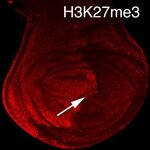Cancer Research

A new generation of chemotherapy drugs that are more effective and less toxic could be on the horizon thanks to a new mechanism to inhibit proteasomes, protein complexes that are a target for cancer therapy.
A member of the category of enzymes known as proteases, the proteasome is a protein complex responsible for several essential functions inside cells, such as eliminating harmful or non-functioning proteins and regulating the processes of apoptosis (programmed cell death), cell division and proliferation, say the authors in Chemistry&Biology,who were led by Daniela Trivella, researcher…

A mutation in a gene called KNSTRN, which is involved in helping cells divide their DNA equally during cell division, is caused by ultraviolet light is likely the driving force behind millions of human skin cancers, according to new research.
Genes that cause cancer when mutated are known as oncogenes. Although KNSTRN hasn't been previously implicated as a cause of human cancers, the research suggests it may be one of the most commonly mutated oncogenes in the world.
"This previously unknown oncogene is activated by sunlight and drives the development of cutaneous squamous cell…

A new blood test could allow doctors to predict which ovarian cancer patients will respond to particular types of treatment. The test could be developed and used in hospitals within the next few years.
It would mean medics could see which patients could benefit from blood vessel-targeting drugs - such as bevacizumab - in addition to conventional therapy. Meanwhile, others who are not going to benefit would be spared the time and side effects associated with having the drug.
The test would also help to reduce the cost to the NHS. Ovarian cancer has seen little increase in…

Melanoma is a common cancer in the United States. in 2014, 76,100 people will be diagnosed with the skin cancer and 9,710 people will die. Several studies have suggested a higher incidence of melanoma in pilots and flight crew and a new review has found it to be worse than believed; airline pilots and cabin crews appear to have twice the incidence of melanoma as the general population.
Flight-based workers are thought to have a greater occupational hazard risk of melanoma because of increased altitude-related exposure to UV and cosmic radiation. While the risks of exposure to…

For breast cancer patients, there are three common surgical interventions: bilateral mastectomy (the removal of both breasts), unilateral mastectomy (the removal of the affected breast), and lumpectomy (the selective removal of cancerous tissue within the breast) plus radiation.
Bilateral mastectomy has gotten popular press because the actress Angelina Jolie proactively had her breasts removed due to her risk factor for breast cancer - but for women who actually have breast cancer, bilateral mastectomy isn't any better than a lumpectomy followed by radiation therapy,…

It has generally been believed that more attractive men had better semen quality.
Male facial attractiveness has been considered an important predictor of female mating preferences because of genetic benefits for offspring - facial traits may signal several quality factors (indirect benefits), such as health and intelligence (e.g. Andersson, 1994). The phenotype-linked fertility hypothesis predicts that male secondary sexual traits are reliable indicators of male fertilization efficiency but studies testing for the phenotype-linked fertility hypothesis have yielded contradictory results. Some…

Visible blood in urine is the best known indicator of bladder cancer but new research finds that invisible blood in urine may be an early warning sign of bladder cancer.
Scientists at the University of Exeter Medical School found that 1 in 60 people over the age of 60 who had invisible blood in their urine transpired to have bladder cancer. Thay's about half those who had visible blood in their urine but higher than figures for other potential symptoms of bladder cancer that warrant further investigation.
The study examined more than 26,000 people whose anonymised data…

In a cell's nucleus, chromosomal DNA is tightly bound to structural proteins known as histones, an amalgam biologists call chromatin.
Until a few decades ago, histones were regarded as a nuclear "sidekick," the packing material around which the glamorous DNA strands were wrapped.
In 2012, investigators from multiple research institutions studying the sequence of the genome from cancer patients changed the "chromatin world" when they independently reported that mutations in the gene that encodes histone H3.3 occurred in aggressive pediatric brain tumors. This finding was stunning, as…

Epidemiologists have correlated eating over 10 portions per week of tomatoes with an 18 percent lower risk of developing prostate cancer, new research suggests.
Prostate cancer is the second most common cancer in men worldwide and diagnosed rates are higher in developed countries, which some claim means is due to a Westernized diet and lifestyle.
To assess if following dietary and lifestyle recommendations reduces risk of prostate cancer, scholars at the Universities of Bristol, Cambridge and Oxford looked at the diets and lifestyle of 1,806 men aged between 50 and 69 with prostate cancer and…

Cancer is the blanket term for over a hundred diseases where abnormal cells divide and invade tissues through blood and lymph systems. The extra cells are often detected in the form of a tumor that people notice as their first symptom, and those can be benign or malignant.
A malignant tumor formed by cells that spreads outside the original tissue is termed a "metastatic" tumor. Because it is in addition to the primary cancer and has already spread, the danger is much higher - the 5-year survival rate for early-stage lung cancer is 52 percent while late-stage lung cancer that has metastasized…